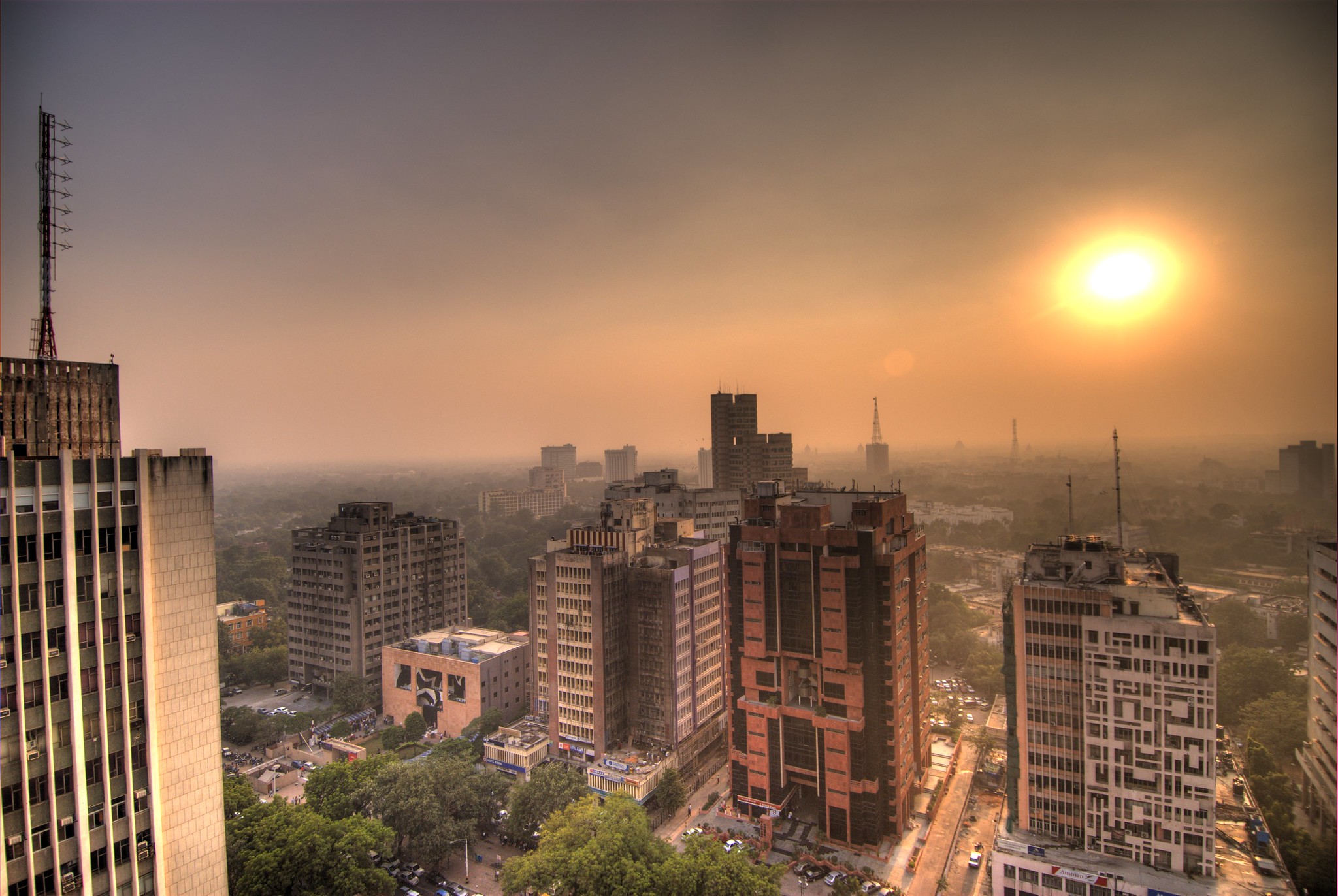Connaught Place, also known as Rajiv Chowk, is a prominent commercial and financial hub located in the heart of New Delhi, India. Designed by British architect Robert Tor Russell, it was built between 1929 and 1933 as part of the British colonial government’s plan to create a new capital city. The area features a distinctive circular layout with concentric rings of Georgian-style buildings, housing numerous shops, restaurants, offices, and entertainment venues. Connaught Place is a major tourist attraction and serves as a central transportation node, with a bustling metro station beneath it. The area’s iconic white colonnaded structures, central park, and vibrant atmosphere make it a symbol of both colonial heritage and modern urban life in India’s capital city.
Connaught Place, the iconic heart of New Delhi, stands as a testament to India’s colonial past and architectural grandeur. This bustling commercial hub, with its distinctive circular design and imposing colonnades, has been a defining feature of the city’s landscape for nearly a century. As one strolls through its wide, tree-lined streets, it’s impossible not to be struck by the seamless blend of British colonial architecture and modern urban life.
The architectural heritage of Connaught Place is deeply rooted in the vision of British architect Edwin Lutyens, who was tasked with designing the new imperial capital of India in the early 20th century. Lutyens, along with his colleague Herbert Baker, sought to create a space that would reflect the power and grandeur of the British Empire while incorporating elements of Indian architecture. The result was a unique fusion of Georgian-style buildings with Indian motifs and decorative elements.
Construction of Connaught Place began in 1929 and was completed in 1933. The complex was named after the Duke of Connaught, a member of the British royal family. Its circular layout, inspired by the Royal Crescent in Bath, England, consists of two concentric circles divided into blocks. The inner circle, known as Connaught Circus, is surrounded by the outer circle, with seven radial roads connecting the two.
One of the most striking features of Connaught Place’s architecture is its uniform white facade, which gives the area a sense of cohesion and elegance. The buildings are characterized by their imposing colonnades, which provide shelter from the harsh Delhi sun and create a pleasant walking experience for visitors. These colonnades, with their Tuscan columns and arched walkways, are not only functional but also serve as a defining aesthetic element of the complex.
The architectural details of Connaught Place reveal a fascinating mix of European and Indian influences. While the overall structure follows a Western classical style, subtle Indian touches can be found in the decorative elements. For instance, the use of chajjas (overhanging eaves) and jalis (perforated stone screens) in some buildings nods to traditional Indian architecture.
Over the years, Connaught Place has undergone several renovations and modifications to keep up with the changing needs of the city. However, efforts have been made to preserve its original character and architectural integrity. The New Delhi Municipal Council (NDMC) has implemented strict guidelines for any alterations or additions to the buildings, ensuring that the colonial-era charm of the area remains intact.
Despite the challenges of urban development and the pressures of modernization, Connaught Place continues to stand as a proud symbol of New Delhi’s architectural heritage. Its enduring appeal lies not only in its historical significance but also in its ability to adapt and remain relevant in a rapidly changing city.
As one of the world’s largest financial, commercial, and business centers, Connaught Place seamlessly blends its colonial past with contemporary urban life. The juxtaposition of heritage buildings housing modern retail outlets, restaurants, and offices creates a unique atmosphere that attracts both locals and tourists alike.
The architectural legacy of Connaught Place serves as a reminder of India’s complex history and its journey towards independence. It stands as a living museum, showcasing the grandeur of colonial architecture while simultaneously embodying the spirit of a modern, thriving metropolis. As New Delhi continues to evolve, Connaught Place remains a cherished landmark, its timeless elegance a testament to the enduring power of thoughtful urban design and architectural vision.
Connaught Place stands as a iconic commercial and cultural hub in the heart of New Delhi, India. Its circular design, colonial architecture, and central park make it a distinctive landmark. As a major shopping destination and business center, it attracts locals and tourists alike. Despite facing challenges of modernization and urban development, Connaught Place remains a symbol of Delhi’s history and progress, blending its colonial past with contemporary vitality. Its enduring popularity and economic significance underscore its importance to the city’s identity and future growth.

